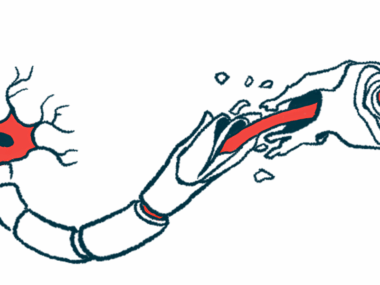Study finds most children with MS have slow-growing brain lesions
Changes in disability or cognitive scores not significantly associated with SEL
Written by |

Most children with multiple sclerosis (MS) have chronic active lesions that slowly get bigger over time, and their frequency seems to correlate with the total number of lesions and reduced brain growth, according to a research letter.
Changes in disability or cognitive scores over time, however, weren’t significantly associated with the total number of lesions, called slowly expanding lesions or SELs.
“This might reflect a greater recovery capacity in younger patients or the beneficial effects of early initiation of anti-CD20 therapy in this cohort,” researchers wrote in the letter “Slowly Expanding Lesions in Pediatric-Onset Multiple Sclerosis,” which was published in JAMA Neurology.
MS is a neurodegenerative disorder wherein the immune system mistakenly attacks myelin, a protective coating around nerve fibers. The damage it causes shows up on MRI scans as bright or dark spots, which are known as lesions. There are several types of lesions in MS and SELs are those that, with chronic active inflammation, get progressively larger over time. They’ve been linked to a higher risk of MS disability progression in adults, but less is known about their importance in children and adolescents.
Here, researchers in the U.K. examined a group of patients with pediatric-onset MS followed between 2019 and 2024 as part of the POINT-MS-Children observational multicenter study. The study enrolled participants within three months of their starting a new therapy and they underwent assessments every six months during the follow-up.
SELs and reduced brain growth
SELs were identified as lesions that showed a constant expansion and grew outward from the center in MRIs taken across three points in time.
Forty children and adolescents were included, their median age being 15.6. Most (85%) were treated with an anti-CD20 therapy, mainly Ocrevus (ocrelizumab), while the remaining ones received Tysabri (natalizumab), interferon-based therapies, Gilenya (fingolimod), or Tecfidera (dimethyl fumarate).
Over a median of 18.3 months, 92.5% of the participants achieved no evidence of disease activity, a status defined as the absence of relapses, new lesions, or confirmed disability progression.
Disability scores, as measured with the Expanded Disability Status Scale (EDSS), and cognitive function both improved, indicating the patients were benefiting from the therapies. Neurofilament light chain levels, a biomarker of nerve damage, also decreased.
Regarding SELs, 85% of patients had at least one, with three being the median amount. They represented about 7% of the total lesion volume observed on scans.
Having more lesions and a smaller brain volume — which may indicate the brain isn’t growing as it should — were both associated with a higher numbers of SELs. For example, each 1-unit decrease in total brain volume measures doubled the chances of having four or more SELs. There was no significant link between the number or volume of SELs and changes in EDSS, cognitive scores, or NfL levels over time, however.
“A higher baseline lesion burden and reduced brain growth were associated with increased SEL formation,” the scientists wrote. “Although SELs reflect a neurodegenerative process independent of relapses, their presence was not accompanied by concurrent disability accrual, as measured by EDSS or cognitive scores.”
The relatively small number of participants and short follow-up period may have limited the analyses, said the researchers, who noted longer studies with larger patient groups may show possible correlations between SELs and clinical features in pediatric patients.






